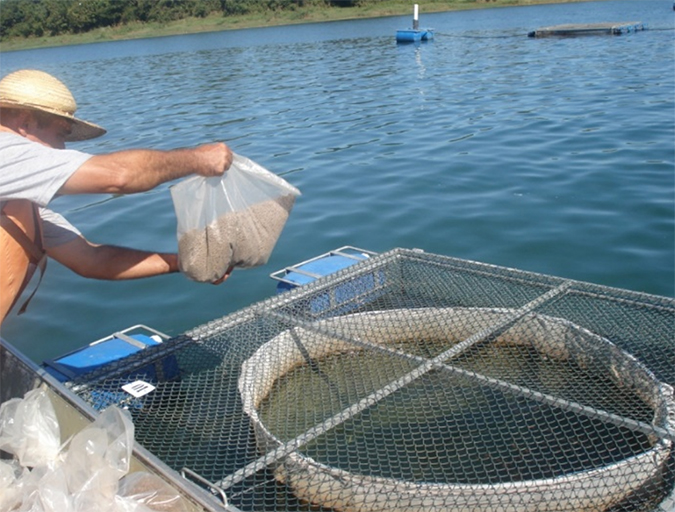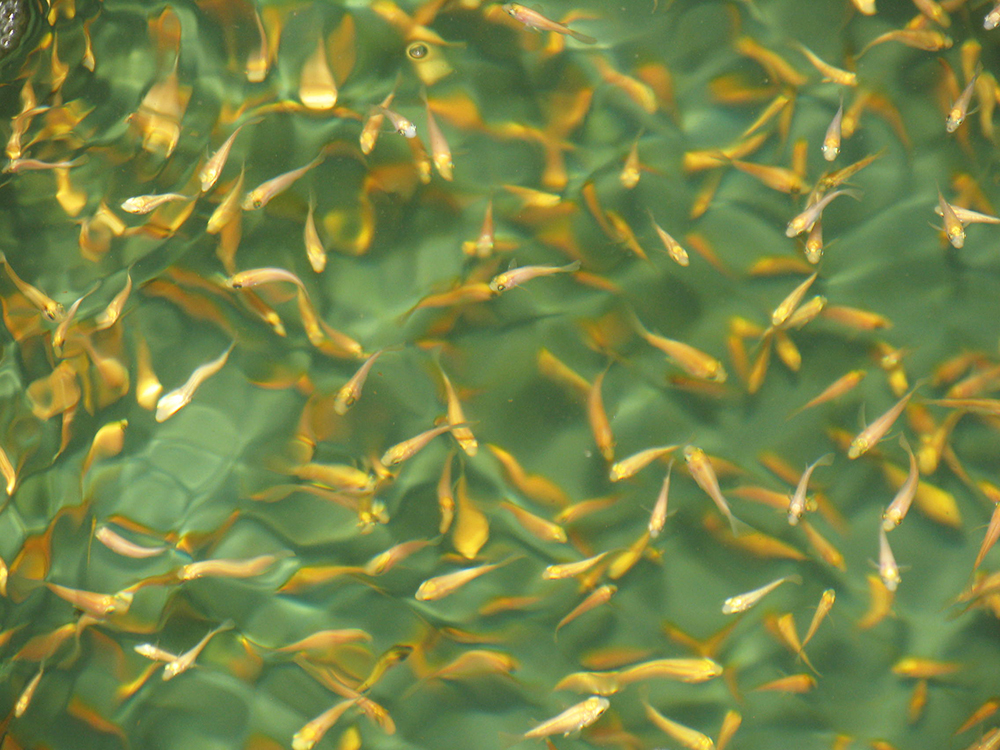Proper measures go beyond use of specific pathogen-free animals

Failure to properly understand the nature of biosecurity is a major, if not the number one, cause of major disease outbreaks at shrimp and fish farms. Few would argue that disease is not the number one source of economic losses to shrimp farmers.
Since disease is a natural phenomenon, and shrimp are often cultured in environments that are conducive to stress and its subsequent negative impacts on the animals’ physiology. Stress results in animals that are more susceptible to disease, and farmers must learn to manage these diseases.
Stress management
Stress management is critical. Without knowing what is affecting animals, it is difficult, if not impossible, to develop a specific strategy to address problems. General strategies can and have been effective, such as using specific pathogen-free postlarvae in areas where problems have historically been linked to the use of postlarvae that are carrying pathogens. Most farms rely on general strategies and implement protocols that staff have learned from others.
In some cases, these strategies are successful, although in many cases they are not. For example, the option of not adding water, another potential biosecurity strategy, to essentially close ponds is simply not viable at some farms. It requires having financial resources to buy adequate aeration.
Probably the number one killer of shrimp is inadequate dissolved-oxygen levels in ponds. Shrimp tolerate very low levels, although they are impacted negatively under such conditions. Even if animals survive low-oxygen events, they are physiologically harmed by the experience. Their immune systems can be weakened, making them more susceptible to pathogens that would not be a problem otherwise. Many bacterial infections in shrimp are a direct result of this.
Main diseases
In determining what strategies will work against disease, there typically must be some knowledge about the pathogens involved. In the case of major shrimp diseases, at this time white spot syndrome (WSS), infectious myonecrosis (IMN) and early mortality syndrome (EMS) are wreaking havoc at shrimp farms globally.
WSS has been around for many years and continues to spread into new areas. IMN, formerly confined to Brazil, has spread to Indonesia, and given the general nature of the industry in Southeast Asia, is likely to appear elsewhere.
EMS is an emerging disease problem, the cause of which has yet to be determined. The pathology appears to be toxic in nature, which means it could be due to a toxin produced by bacteria, algae, fungi or protozoa. EMS continues to be reported in new areas, and local severity is increasing.
Observations have suggested that something in the bottoms of ponds may be affecting the shrimp once they are stocked. Reports suggest that after 30 days or so, postlarvae are refractory to the problem, although there are reports of late EMS. Note that many of the reports on this disease are anecdotal.
Farm strategies
Most farms with WSS routinely use a variety of disinfectants and/or pesticides to kill any potential vectors that might be present in the ponds before stocking. All too often, this turns out to be a futile gesture, and the disease occurs anyway.
Typical biosecurity measures include the use of crab fences to keep larger vectors out of ponds and bird nets that prevent gorging birds from moving the problem from pond to pond. The use of specific pathogen-free animals has become a common practice. Some farms allow ponds to mature microbiologically to the point where the bacteria in the ponds are able to degrade the primary metabolites and maintain adequate water quality. Biofloc can be a component of this.
While there are reports that some shrimp families are more tolerant of the WSS virus than others, in real-world environments with multiple stressors and repeated exposure to the virus, there have been no continued reports of these families providing a solution to the problem.
One thing that very few farmers address is the fact that vectors for WSS are present in pond sediment in the form of cysts that tolerate a wide variety of environmental extremes. Drying ponds does not kill them and neither do standard-dose applications of disinfectants and pesticides.
Often sediments bind and inactivate these chemical compounds, and they have to be used at much higher levels, or new “out of the box” strategies must be developed. While the vectors may be knocked back to less than readily detectable numbers, they still eventually thrive given the right environment to do so. Until farmers develop better techniques for ensuring there is no vector carryover, there is little hope that the disease cycle can be broken in areas where the virus is endemic.
EMS, while of an unknown etiology, does lend itself to control. Since all of the data to date suggests that larger, 40-day-old shrimp postlarvae are not susceptible to the problem, this may lead to a solution. Larger postlarvae, however, are difficult to transport.
The use of raceways in which there is no benthos, with high flow rates of water that has been filtered and/or disinfected in a reservoir, should be a component of breaking the EMS cycle until alternative strategies develop once a clear cause is determined. Bear in mind, however, that not all problems of this nature have solutions.
Perspectives
Proper biosecurity involves utilizing the tools that are available and taking a look at the big picture. All too often, farmers use some of the tools, but fail to see the big picture and find themselves stuck in a seemingly endless repetitive process that never fully takes existing information into account or is limited by their ability to pay for the changes needed to reduce the stress that animals are under.
Establishing effective biosecurity can be quite complicated due to large numbers of interacting variables. But without reducing preventable stressors from acting on animals, even the best biosecurity in the world will not work to ensure animal health.
(Editor’s Note: This article was originally published in the March/April 2013 print edition of the Global Aquaculture Advocate.)
Now that you've reached the end of the article ...
… please consider supporting GSA’s mission to advance responsible seafood practices through education, advocacy and third-party assurances. The Advocate aims to document the evolution of responsible seafood practices and share the expansive knowledge of our vast network of contributors.
By becoming a Global Seafood Alliance member, you’re ensuring that all of the pre-competitive work we do through member benefits, resources and events can continue. Individual membership costs just $50 a year.
Not a GSA member? Join us.
Author
-
Stephen G. Newman, Ph.D.
6722 162nd Place Southwest
Lynnwood, Washington 98037-2716 USA
Tagged With
Related Posts

Health & Welfare
A comprehensive look at the Proficiency Test for farmed shrimp
The University of Arizona Aquaculture Pathology Laboratory has carried out the Proficiency Test (PT) since 2005, with 300-plus diagnostic laboratories participating while improving their capabilities in the diagnosis of several shrimp pathogens.

Health & Welfare
A holistic management approach to EMS
Early Mortality Syndrome has devastated farmed shrimp in Asia and Latin America. With better understanding of the pathogen and the development and improvement of novel strategies, shrimp farmers are now able to better manage the disease.

Health & Welfare
Aiding gut health with a natural growth promotor
A study with Nile tilapia conducted in commercial production cages in Brazil showed the potential – in the absence of major disease threats – of a commercial, natural growth promotor that modulates the microbiota (inhibiting growth of pathogenic bacteria and promoting growth of beneficial bacteria) and inhibits quorum sensing.

Health & Welfare
Biosecurity practices on fish farms need beefing up
Biosecurity measures and preventive strategies are essential in any biological production chain. Properly planned and implemented biosecurity programs will enhance animal health, production and economics.



